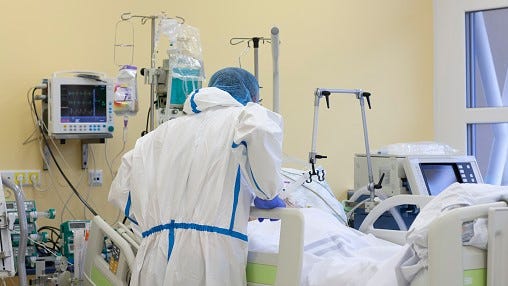
The number of people hospitalized with COVID-19 in North Texas on Thursday neared 2,700 -- the highest number recorded since September, health officials say.
The surge in hospitalizations came on quickly, as less than 1,000 people -- 964 specifically -- were in North Texas hospitals with COVID-19 on Dec. 23, according to Texas Department of State Health Services data.
But Stephen Love, president of the Dallas-Fort Worth Hospital Council said most of those hospitalized had something in common.
"When I talk to the doctors and when I talk to the clinicians in the hospitals, we still have that same trend: the majority of Covid patients have not been vaccinated," he said. "It's very unfortunate because it could be so easily prevented."
He said hospitals in Trauma Service Area E, which includes 19 North Texas counties, have added more than 1,000 COVID-19 patients in just the last week.
"We're very concerned because all of the models show we still have not peaked," Love said.
The Dallas-based University of Texas Southwestern Medical Center updated its COVID-19 forecast, which now predicts Dallas County alone will have more than 1,200 hospitalizations by the end of January.
Dallas County Health and Human Services opened a new testing site Thursday morning at The Cove Aquatic Center at Samuell Grand to try to accomodate the demand for tests.
In Tarrant County, Cook Children's Medical Center said it has more children hospitalized with the virus than it has since the start of the pandemic. The numbers are similar across North Texas, with 104 hospitalized pediatric COVID-19 patients on Thursday, compared to just 15 on Dec. 23, according to DSHS data.
Love said experts were working to determine what led to the rise in children in the hospital, after they weren't impacted as severely with earlier COVID-19 variants.
"Many of the pediatric patients are not vaccinated. Some are just too young to be vaccinated and others maybe their parents just haven't taken them," he said. "So we don't know whether it's unvaccinated, it's so contagious or all of the above."
Love said if the trend in the United States follows the same course as those in South Africa and parts of Europe, hospitals could face two to three more weeks of increased volume, which could lead health care systems to look for assistance.
"In past surges, the state has really stepped up and helped us with supplemental staffing," he said. "Behind the scenes, they're looking now for additional traveling nurses to help us and we hope to get some of those very soon."
The difference in this surge versus past surges, he noted, is that this time around every hospital in the country needs the help.
LISTEN on the Audacy App
Sign Up and Follow NewsRadio 1080 KRLD

